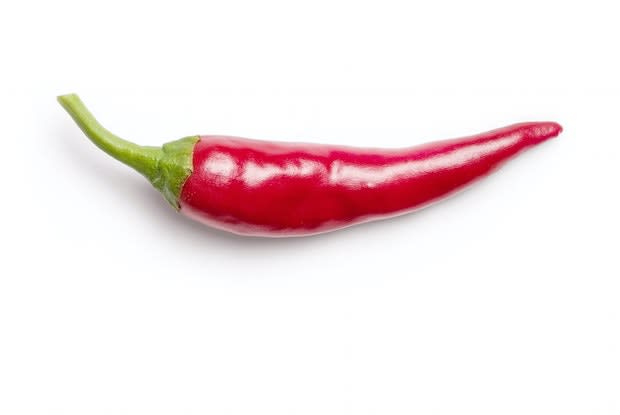Table of Contents
Living with arthritis can lead to aches and pain that may interfere with everyday life. There are several types of arthritis, but all can damage the joints and surrounding cartilage in the knees, elbows, fingers, and hips. If these joints become affected, then permanent damage and loss of mobility can occur. Arthritis can occur due to wear and tear or other auto-immune inflammatory responses. People need to seek treatment for arthritis to prevent permanent deformities. Your doctor may prescribe medications like Cymbalta (duloxetine) to help with symptoms. These symptoms can include:
- Decreased range of motion
- Stiffness
- Swelling
- Redness
- Pain
Arthritis is a degenerative condition and typically worsens as you age, so it is essential to get control of joint pain before it impedes function. Along with medications, there are several other therapies you can do at home to help with the pain. Read on to learn more about remedies to help with your arthritis pain. [1]
A person’s weight can have a large impact on their arthritis condition. More weight on the body’s frame can increase the feeling of stiff, achy joints and fatigue. If you have inflammatory arthritis, the cytokine levels in the body become elevated. If you are overweight or obese, the level of cytokines increases, which can lead to insulin resistance and other complications. It is important to try to keep any extra weight off to prevent worsening your arthritis condition. If you need help starting your weight loss journey, your doctor can refer you to a dietician and recommend exercises that can work for you. A dietician can help you choose anti-inflammatory foods that can support weight loss, boost energy levels, and support digestion. You may want to limit your consumption of sugar and processed foods and substitute those for filing but satisfying proteins, like salmon. If you do not already have an exercise routine, you can start by talking a few walks a week. Once you become more comfortable, you can try jogging, swimming, or biking. [2] Acupuncture has gained more mainstream acceptance over the years. The theory of acupuncture involves the idea that there are more than 2,000 acupuncture points throughout the body. These points can be stimulated with needles, which may alleviate pain. Acupuncturists believe that a well-placed needle can trigger neurotransmitters in the brain and release endorphins and enkephalins. These substances can reduce pain. Cortisol may also be produced by acupuncture, reducing inflammation. You need to go to a licensed acupuncturist to get the best results. Many experts question if acupuncture is just a placebo effect for pain relief, but it may not matter. One study by JAMA Internal Medicine found that real acupuncture was almost as effective in treating pain as placebo treatments. Over 50 percent of patients found that their arthritis pain was improved with acupuncture. Around 42 percent of people in the study had improved pain with a placebo treatment. If your arthritis pain is not being treated fully with medications, you might want to try this treatment to see if you can improve your condition. You may want to get the approval of your physician before seeking out an acupuncturist. [3] Inflammatory pain can be reduced with hot and cold therapy. Using a hot pad or hot water bottle can increase circulation in the body, reducing arthritis pain. This can also soothe stiff joints. Cold treatments work differently by restricting blood vessels and slowing circulation. This can also reduce swelling and numb any pain. These therapies may appear opposite, but both can work if medication is not providing enough relief. Examples of heat treatments can include: Examples of cold treatments can include: There are hundreds of natural supplements on the market that may benefit arthritis pain. Many supplements are untested, but scientists back a few supplements that have anti-inflammatory properties. The following supplements may help your arthritis condition: Boswellia Serrate (Indian frankincense): The acids in this supplement may reduce inflammation and give pain relief. One 2008 study found that it can prevent cartilage loss and may significantly improve osteoarthritis pain within seven days. It can slow cartilage loss after three months of use. [5] Capsaicin: This substance is found in many spicy foods, most commonly chili peppers. Interestingly, capsaicin is spicy to the mouth but can reduce pain transmitters in the body. You can purchase capsaicin in topical creams, gels, or patches. Turmeric: There is a chemical in turmeric (curcumin) that reduces joint pain and swelling. Curcumin does this by blocking inflammatory cytokines. Fish Oil: Fish oil is full of omega-3s that work to block cytokines and prostaglandins. Like cytokines, prostaglandins are also inflammatory substances that are present at the site of infections or injuries. Fish oil has been studied extensively and can decrease joint pain when used regularly. [5] TENS is also known as transcutaneous electrical nerve stimulation therapy. TENS works best when arthritis is confined to a specific area. This therapy involves placing electrode pads above and below or parallel to the affected joint. These pads can be applied to several areas, but you may want to apply pads to the most painful regions first. If you are experiencing arthritis pain in the hips or knees, your TENS specialist may apply the electrodes to the lower back to stimulate nerves in the lumbar spine. The length of your TENS treatment depends on the pain and severity of your arthritis pain. You can turn the TENS unit off and on as necessary. Typically, people can use this therapy 30 minutes, three times a day. [6] These therapies can be supplementary to a proper medication plan. Drugs like Cymbalta (duloxetine) are typically used to treat depression and anxiety. Along with these functions, nerve pain can also be reduced with Cymbalta, which directly benefits arthritis, chronic pain, and fibromyalgia. For everyday pain, you can reach for NSAIDs (nonsteroidal anti-inflammatory drugs) or corticosteroids. These drugs can be bought over-the-counter at your local pharmacy, but stronger strengths may be prescribed by your doctor. [7] The content in this article is intended for informational purposes only. This website does not provide medical advice. In all circumstances, you should always seek the advice of your physician and/or other qualified health professionals(s) for drug, medical condition, or treatment advice. The content provided on this website is not a substitute for professional medical advice, diagnosis or treatment.
Weight and Exercise
Acupuncture

Hot and Cold Therapy
Herbal Supplements

TENS
Take Your Medications
